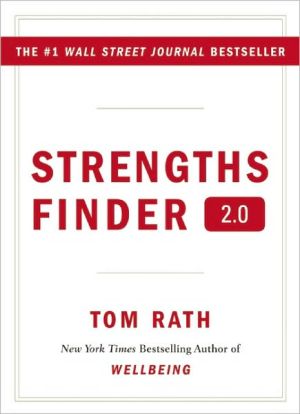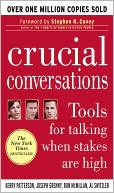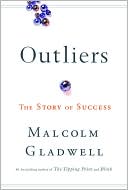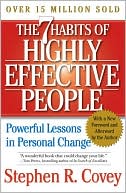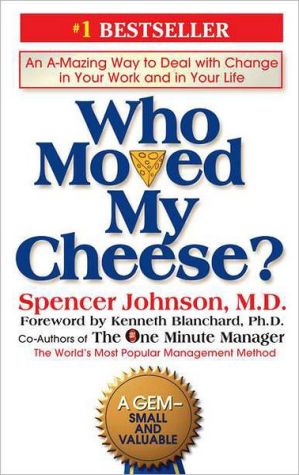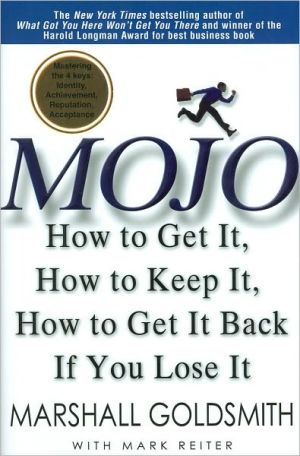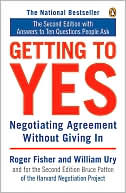Thinkertoys: A Handbook of Creative-Thinking Techniques
This is an updated and expanded edition of the best-selling Thinkertoys, which is considered by many to be the classic book of creative thinking techniques. The original ground-breaking first edition was widely acclaimed by readers and reviewers. The Wall Street Journal reported 'this book will change the way you think." Women In Business lauded it as "one of the most important business titles of the decade," Success magazine described it as a "fun-to-read book which helps you to create and...
Search in google:
This is an updated and expanded edition of the best-selling Thinkertoys, which is considered by many to be the classic book of creative thinking techniques. The original ground-breaking first edition was widely acclaimed by readers and reviewers. The Wall Street Journal reported 'this book will change the way you think." Women In Business lauded it as "one of the most important business titles of the decade," Success magazine described it as a "fun-to-read book which helps you to create and act on ideas," USA said "believe it or not, this wonderful book will have you challenging the seemingly impossible every day," Executive Book Summaries praised it by saying, "What we need is a compendium of ways to solve problems. And that's exactly what you get in Thinkertoys" Entrepreneur acclaimed it as "required reading for anyone in business," the Futurist said "Thinkertoys" shows you how to do what you think can't be done," and the AMA called it "the most significant book on creativity published in the last twenty years." This new edition contains updated examples, three new Thinkertoys and an entirely new group brainstorming section with five new chapters. Michael is also the author of Thinkpak (A Brainstorming Card Set), which is a novel creative-thinking tool that is designed to facilitate brainstorming sessions and Cracking Creativity (The Secrets of Creative Geniuses) which describes the common thinking strategies creative geniuses have used in the sciences, art, and industry throughout history and shows how we can apply them to become more creative in our business and personal lives.From the Author Most people of average intelligence, given data or some problem, can figure out the expected conventional response. When confronted with problems, we fixate on something in our past that has worked before. We ask, "What have I been taught in life, education or work on how to solve the problem?" Then we analytically select the most promising approach based on past experiences, excluding all other approaches, and work within a clearly defined direction towards the solution of the problem. Because of the soundness of the steps based on past experiences, we become arrogantly certain of the correctness of our conclusion. Typically, we think reproductively, that is on the basis of similar problems encountered in the past. This is why we so often fail when confronted with a new problem that is similar to past experiences only in superficial ways, or on the surface, and is different from previously encountered problems in its deep structure. Interpreting such a problem through the prism of past experience will, by definition, lead the thinker astray. Reproductive thinking leads us to the usual ideas and not to original ones. If you always think the way you've always thought, you'll always get what you've always got--the same old, same old ideas. My "Thinkertoys" are creative-thinking techniques that will change the way you think. Each "Thinkertoy" contains specific instructions and an explanation of why and how it works including anecdotes, stories, and examples of how others have implemented the technique to produce their breakthrough ideas.
Thinkertoys\ A Handbook of Creative-Thinking Techniques \ \ By Michael Michalko \ Ten Speed Press\ Copyright © 2006 Michael Michalko\ All right reserved.\ ISBN: 9781580087735 \ \ \ Introduction\ THE BARKING CAT\ \ What would you think of someone who said, “I would like to have a cat, provided it barked”? The common desire to be creative, provided it’s something that can be easily willed or wished, is precisely equivalent. The thinking techniques that lead to creativity are no less rigid than the biological principles that determine the characteristics of cats. Creativity is not an accident, not something that is genetically determined. It is not a result of some easily learned magic trick or secret, but a consequence of your intention \ \ to be creative and your determination to learn and use creative-thinking strategies.\ \ The illustration below shows the word “FLOP,” which we all know and understand. Look at it again. Can you see anything else?\ \ Once we see the word “FLOP,” we tend to exclude all other possibilities, despite the strange shapes of the letters. Yet if you look at the “O” in flop, you can see a white “I.” Now if you read the white outlines as letters with the “I,” you will see the word “FLIP.” Flip-flop is the complete message. Once found, it seems so obvious that you wonder why you were, atfirst, blind to it.\ \ By changing your perspective, you expand your possibilities until you see something that you were unable to see before. This is what you will experience when you use Thinkertoys. You will find yourself looking at the same information everyone else is looking at yet seeing something different. This new and different way of seeing things will lead you to new ideas and unique insights.\ \ Thinkertoys train you how to get ideas. They are specific hands-on techniques that enable you to come up with big or small ideas; ideas that make money, solve problems, beat the competition, and further your career; ideas for new products and new ways of doing things.\ \ The techniques were selected for their practicality and range from the classic to the most modern. They are divided into linear techniques, which allow you to manipulate information in ways that will generate new ideas, and intuitive techniques, which show you how to find ideas by using your intuition and imagination.\ \ A popular children’s puzzle shows six fishermen whose lines are tangled together to form a sort of maze. One of the lines has caught a fish; the problem is to find which fisherman it belongs to. You are supposed to do this by following each line through the maze, which may take up to six tries, depending on your luck. It is obviously easier to start at the other end and trace the line from the fish to the fisherman, as you have only one possible starting place, not six.\ \ This is how I researched and developed Thinkertoys. Instead of presenting a catalog of all known creative techniques and abandoning you to \ \ puzzle out which ones actually work, I started with the ideas (fish) and worked backwards to each creator (fisherman). Then I identified the technique that caught the idea.\ \ Some readers will feel that they profit more from the linear techniques and will discount the intuitive ones. Others will prefer the intuitive and discount the linear. You can produce ideas using both the linear and intuitive techniques, and should not limit yourself to one or the other--the more ideas you generate the better.\ \ This book will change how you perceive your own creativity, while stripping creativity itself of its mystique. You will, perhaps for the first time, see endless possibilities stretching before you. You will learn how to:\ \ \ \ • Generate ideas at will.\ \ • Find new ways to make money.\ \ • Create new business opportunities.\ \ • Manipulate and modify ideas until you come up with the most innovative and powerful ideas possible.\ \ • Create new products, services, and processes.\ \ • Improve old products, services, and processes.\ \ • Develop solutions to complex business problems.\ \ • Revitalize markets.\ \ • See problems as opportunities.\ \ • Become more productive.\ \ • Be the “idea person” in your organization.\ \ • Know where to look for the “breakthrough idea.”\ \ • Become indispensable to your organization.\ \ Thinkertoys do not render the creative experience, they suggest it. To illustrate, let us imagine me drawing a rabbit on a blackboard. You say “Yes, that’s a rabbit,” although in reality there is nothing on the blackboard but a simple chalk line. The rabbit appears because you have accepted my motion that the space within the line suggests a rabbit. The line limits the content by suggesting a significant form.\ \ I must stress that it is not enough to read the book--to create your own ideas, you have to use the techniques. Try to explain the joy of skiing to a bushman who has never left the desert. You can show him some skis and a picture of a snowy mountain, and perhaps get some of the idea across. However, to fully realize the concept of skiing our bushman must put on the skis and head down a mountain. If you merely read these techniques, you will have no more than a suggestion of how to get ideas. You’ll be like the bushman standing in the desert, staring at a pair of skis and a photo of the Matterhorn, with a small notion of what skiing might be.\ \ Each Thinkertoy is a specific technique for getting ideas to solve your challenges. Each chapter contains a blueprint that gives precise instructions for using the technique and an explanation of why it works--including anecdotes, stories, and examples of how real heroes used each technique to produce ideas and breakthroughs. I call them heroes because they left behind a mark, a sign, an idea, an enterprise, a product, or a service that reminds us of their innovation.\ \ I also use illustrations, puzzles, charts, and hypothetical examples to demonstrate how various techniques work. Some of these hypothetical examples present usable ideas for new businesses, products, and services. These ideas are the gold beneath the river of words continually rushing past.\ \ Each chapter begins with an inspirational quote from The Art of War by the legendary master, Sun Tzu. Sun Tzu wrote his extraordinary book in China more than 2,400 years ago, but his principles are as applicable to \ \ creativity in business as in warfare. Long a classic for Japanese businesspeople, his book is now required reading at many leading international business schools. From Tokyo to Wall Street, business leaders quote and apply the principles of Sun Tzu.\ \ This new edition contains new Thinkertoys “Lotus Blossom,” and “True and False,” updated examples, and an entirely new group-brainstorming section with several new techniques.\ \ A friend of mine, Hank Zeller (an executive, entrepreneur, inventor, and poet), once described creativity this way: “When you realize that you just came up with an idea that betters anything that has been done, well, your hair stands up on end, you feel an incredible sense of awe; it’s almost as if you heard a whisper from God.” \ \ Continues... \ \ \ \ Excerpted from Thinkertoys by Michael Michalko Copyright © 2006 by Michael Michalko. Excerpted by permission.\ All rights reserved. No part of this excerpt may be reproduced or reprinted without permission in writing from the publisher.\ Excerpts are provided by Dial-A-Book Inc. solely for the personal use of visitors to this web site. \ \
Contents Preface to the New Edition xiThe Barking Cat (Introduction) xvii initiation 1 Chapter One: Original Spin 3Chapter Two: Mind Pumping 11Chapter Three: Challenges 22Chapter Four: Thinkertoys 35 Part One: Linear Thinkertoys 41 Group AChapter Five: False Faces (reversal) 43Chapter Six: Slice and Dice (attribute listing) 53Chapter Seven: Cherry Split (fractionation) 60Chapter Eight: Think Bubbles (mind mapping) 66Chapter Nine: SCAMPER (questions) 72 Group BChapter Ten: Tug-of-War (force-field analysis) 111Chapter Eleven: Idea Box (morphological analysis) 117Chapter Twelve: Idea Grid (FCB grid) 126Chapter Thirteen: Lotus Blossom (diagramming) 132Chapter Fourteen: Phoenix (questions) 137Chapter Fifteen: The great Transpacific Airline and Storm Door Company (matrix) 144Chapter Sixteen: Future Fruit (future scenarios) 150 Group CChapter Seventeen: Brutethink (randomstimulation) 157Chapter Eighteen: Hall of Fame (forced connection) 170Chapter Nineteen: Circle of Opportunity (forced connection) 179Chapter Twenty: Ideatoons (pattern language) 184Chapter Twenty-One: Clever Trevor (talk to a stranger) 190 Part Two: Intuitive Thinkertoys 199 Chapter Twenty-Two: Chilling Out (relaxation) 203Chapter Twenty-Three: Blue Roses (intuition) 210Chapter Twenty-Four: The Three B’s (incubation) 218Chapter Twenty-Five: rattlesnakes and Roses (analogies) 223Chapter Twenty-Six: Stone Soup (fantasy questions) 239Chapter Twenty-Seven: True and False (janusian thinking) 248Chapter Twenty-Eight: Dreamscape (dreams) 256Chapter Twenty-Nine: Da Vinci’s Technique (drawing) 261Chapter Thirty: Dali’s Technique (hypnogogic imagery) 268Chapter Thirty-One: Not Kansas (imagery) 273Chapter Thirty-Two: The Shadow (psychosynthesis) 281Chapter Thirty-Three: The Book of the Dead (hieroglyphics) 287 Part Three: The Spirit of Koinonia 293 Chapter Thirty-Four: Warming Up 299Chapter Thirty-Five: Brainstorming 311Chapter Thirty-Six: Orthodox Brainstorming 323Chapter Thirty-Seven: Raw Creativity 341 Part Four: Endtoys 363 Chapter Thirty-Eight: Murder Board 365Chapter Thirty-Nine: You Are Not a Field of Grass 374 Index 381About the Author 395

